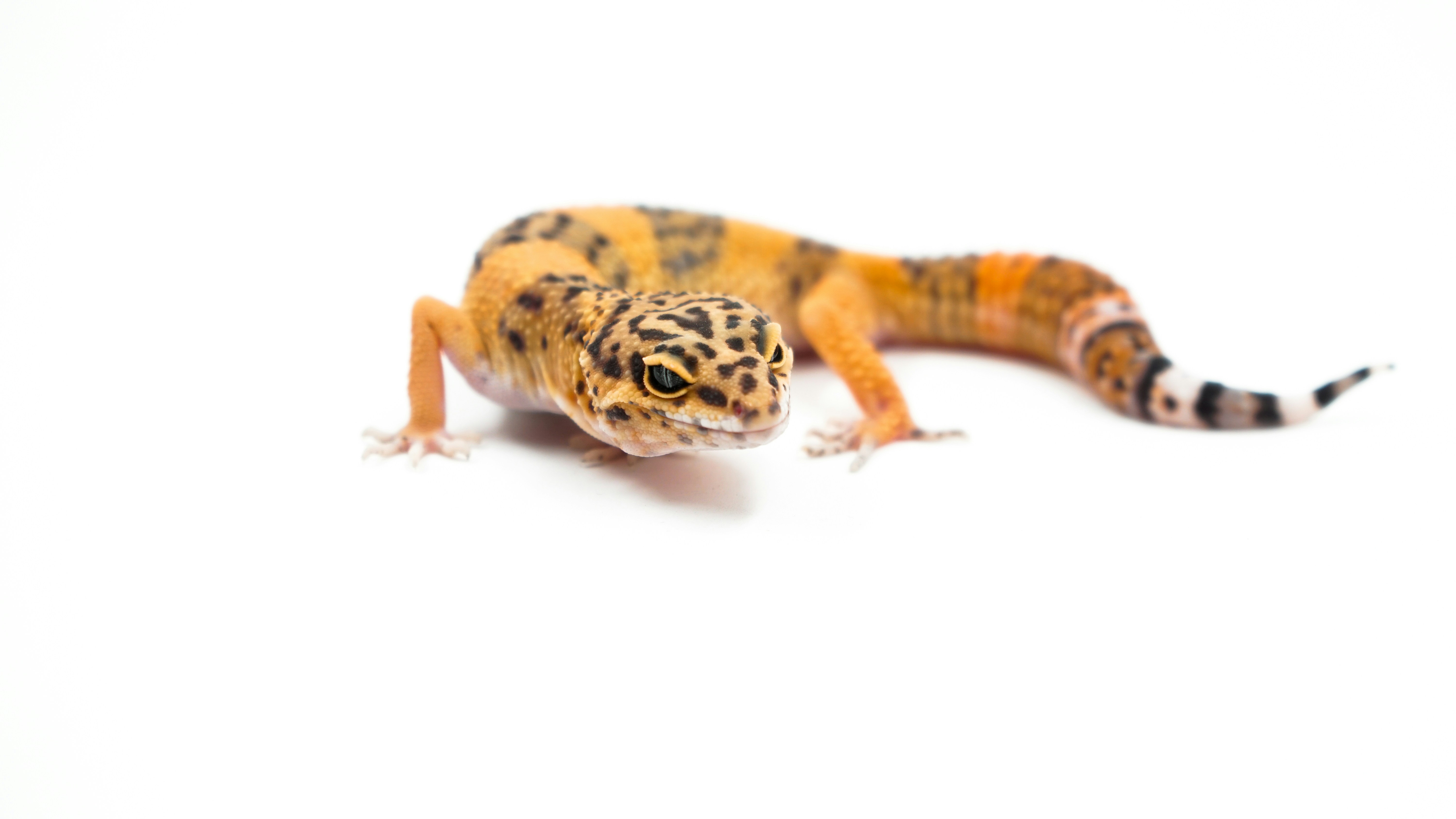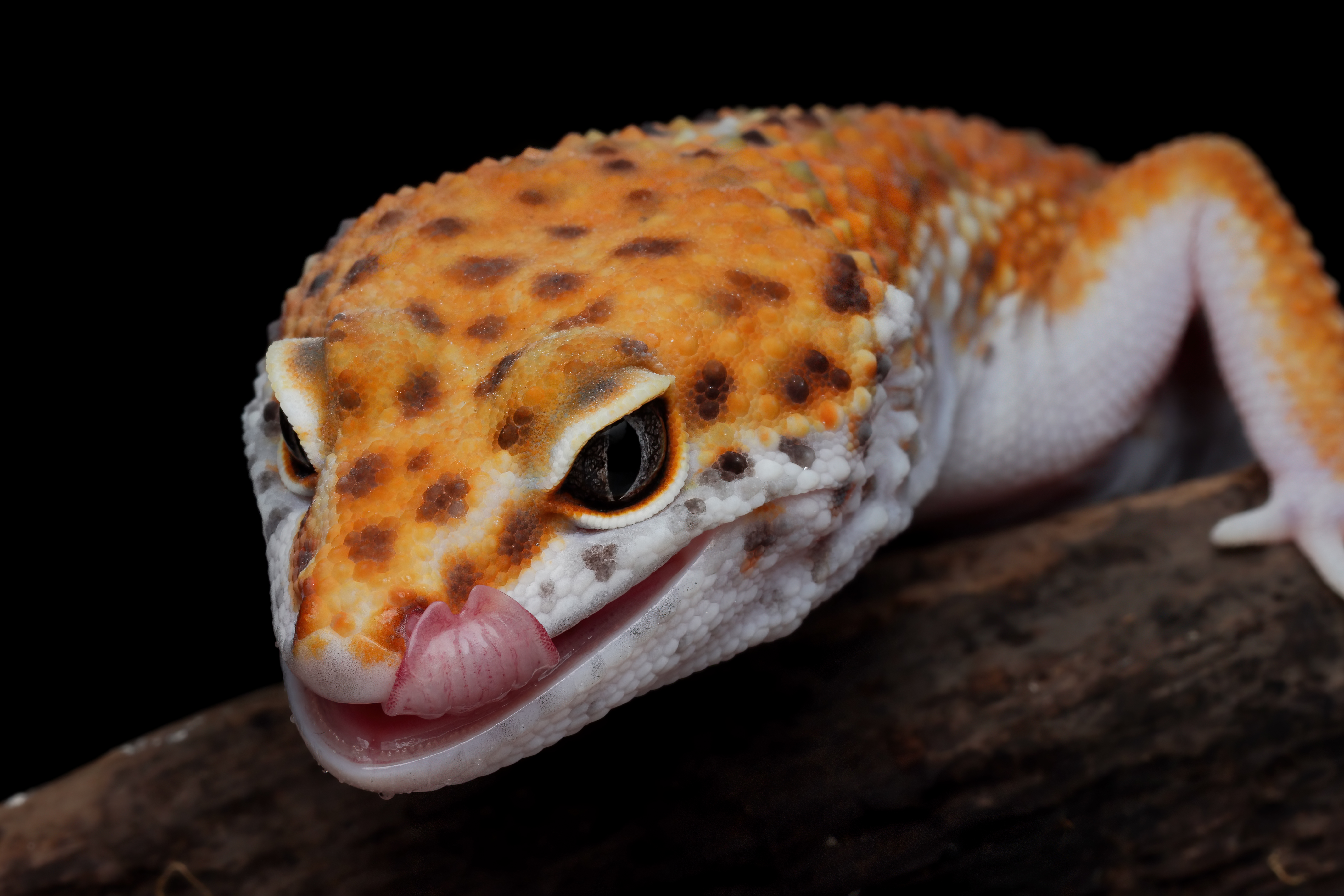Leopard Gecko Care Sheet (Beginner-Friendly Guide)
Leopard geckos are among the most popular pet reptiles for a reason—they’re hardy, easy to care for, and incredibly cute!
Whether you’re just starting out or adding a new reptile to your collection, this guide will help you set up everything your leopard gecko needs to thrive.

📌 Basic Information
- Common Name: Leopard Gecko
- Scientific Name: Eublepharis macularius
- Lifespan: 10–20 years
- Adult Size: 7–10 inches (18–25 cm)
- Origin: Deserts of Pakistan, India, and Afghanistan
- Temperament: Docile, calm, easy to handle
🏡 Habitat Setup
Leopard geckos are ground-dwelling desert reptiles that thrive in dry, warm environments.
Enclosure
- Size: Minimum 20-gallon long tank for one adult
- Type: Glass terrarium with screen lid
- Important: Horizontal space is more important than height
Heating & Lighting
- No UVB Required, but low-level UVB (2–5%) can be beneficial
- Belly Heat Pad: Preferred over overhead lights
- Warm Side Temp: 88–92°F (31–33°C)
- Cool Side Temp: 75–80°F (24–27°C)
- Night Temp: Can go down to 70°F (21°C)
Hides
- Provide three hides:
- Warm hide
- Cool hide
- Moist hide (for shedding)
Substrate
- Best for Beginners: Paper towels, reptile carpet, or tile
- Avoid: Loose sand or calcium sand (impaction risk)

🥩 Diet & Feeding
Leopard geckos are insectivores—they eat only bugs!
Staple Insects
- Crickets
- Dubia roaches
- Mealworms
- (Occasional treats: waxworms, hornworms)
Feeding Frequency
- Juveniles: Daily
- Adults: Every 2–3 days
Supplements
- Calcium with D3: 2–3x/week
- Multivitamin: 1x/week
💡 Always dust feeder insects before offering.
Water
- Shallow dish of fresh water should always be available.
🩺 Health & Maintenance
-
Common Issues:
- Impaction (from loose substrate)
- Shedding problems (lack of humidity)
- Metabolic Bone Disease (from calcium or D3 deficiency)
-
Tail Health: A fat, plump tail means a well-fed gecko.
-
Cleaning: Spot clean daily, deep clean weekly or biweekly
✋ Handling & Socialization
- Start Slow: Let your gecko get used to your presence
- Lift Gently: Scoop from below and support the body
- Never Grab the Tail: It can drop as a defense mechanism
They are usually calm and easygoing with regular handling.
❓ Frequently Asked Questions (FAQ)
Q: Can leopard geckos live together?
A: It's best to house them separately. Never house two males together.
Q: Do they need UVB lighting?
A: Not strictly, but low UVB can be beneficial for long-term health.
Q: What should I do if my gecko won’t eat?
A: Check temps first. If stable, try different insects or consult a reptile vet.
✅ Final Tips
- Don’t use heat rocks—they can burn your gecko.
- Track feeding and shedding in a simple notebook.
- Monitor weight regularly—a digital scale helps.
Thanks for being a responsible reptile keeper.
Happy gecko days ahead! 🦎✨
